フラットトップレーザービームをなぜ使う?
レーザービームのほとんどはガウシアン分布ですが、非ガウシアンの放射強度分布をもつことが有益となる場合があります。ガウシアンビームは、レーザービーム断面の中心から距離が離れるにつれて、その強度分布が対称的に減少していきます。フラットトップ (あるいはトップハット) ビームは、レーザービーム断面の放射強度分布が一定を保ちます (Figure 1)。半導体ウェハーの加工、高出力レベルでの非線形周波数変換、および材料加工をはじめ、与えられたエリアに対して強度分布が一定であることがメリットになるアプリケーションがあります。フラットトップビームは、ガウシアンビームに比べると、よりクリーンなカットやシャープなエッジといった、より正確で予見可能な結果になりますが、これにはシステムの複雑性やコストが伴います。
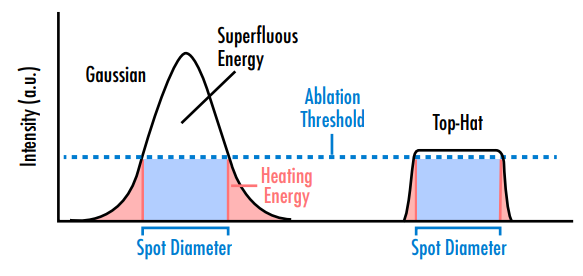
Figure 1: ガウシアンビームは、アプリケーションに求められる閾値よりも高い過剰エネルギーと、ガウシアンビーム外側部分の閾値よりも低いエネルギーの両方が発生する点から、エネルギーを多く浪費します。フラットトップビームは、無駄なエネルギーを最小限に抑えながら閾値を超えるという点で、より効率的になる
ガウシアンビーム
高品質のシングルモードレーザーは、低次のガウシアン強度分布 (TEM00モード) を作ります。フラットトップレーザービームと同じ平均光パワーをもつガウシアンレーザービームは、ピークフルエンスがフラットトップのそれの2倍になります (Figure 2) 。ガウシアンビームは、変換後も一定に保たれるため、ビームサイズが変化しても、ビームがシステム内を伝播する際のビーム分布はまだガウシアンのままです。これは、ガウス関数のフーリエ変換が別のガウス関数になるからです。光は、無限に遠くまで伝播するか、パーフェクトなレンズによって集光されることによって、フーリエ変換が行われます。TEM00のようなレーザーモードに関する更なる情報は、レーザー共振器モードのアプリケーションノートをご覧ください。
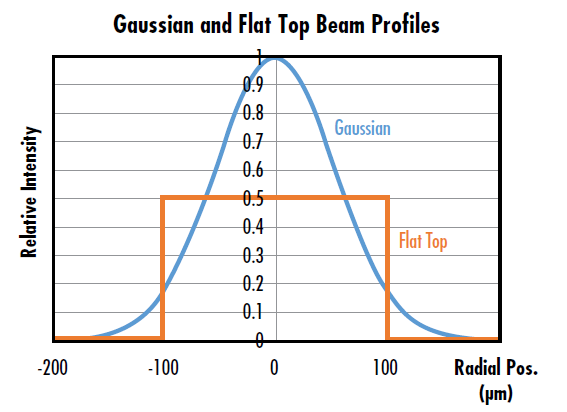
Figure 2: ガウシアンビームとフラットトップビームが同じ光パワーをもつ時、ガウシアンビームのピーク強度はフラットトップビームのそれの2倍になる
ガウシアンレーザーは、他のレーザーよりも費用対効果に優れてより一般的ですが、ウイング (ビームの使用可能な中心部分から広がる低強度領域) など、いくつかの欠点があります。ガウシアンビームのウイングは、その強度がアプリケーションに求められる閾値より低い場合に、エネルギーの浪費につながることがよくあります (Figure 1)。また、周囲に損傷を与えたり、熱の影響するエリアを拡大させたりすることもあるので、レーザー手術や精密な材料加工などのアプリケーションでは有害になります。ガウシアンビームで精巧な形状をカットしたり成形する場合、ガウシアンビームの熱の及ぼすエリアを拡大させてしまうことから、フラットトップビームよりも精度が低下します。よって、この類いのアプリケーションには、フラットトップの方がより適しています。
フラットトップビーム
実際のビームが、理想的なフラットトップビームにどのくらい近いかを評価する一つの方法として、フラットネスファクタ (Fη) があります。ISO 13694に記載されている通り、平均放射強度値を最大放射強度値で割ってこの値が求められます。1
ウイングがなく、エッジの切り替わりが急峻なフラットトップビームは、より効率的なエネルギー供給を可能にし、熱の及ぼすエリアも小さくします。1 これは、高い精度と周囲へのダメージの最小化が優先される広範なアプリケーションにおいて有益です。レーザー誘起損傷閾値 (LIDT) 試験などの計測アプリケーションでは、フラットトップビームの均一かつ明確に定義された強度分布が、測定の不確実性と統計的分散を低減します。フラットトップビームによる均一な照明は、蛍光顕微鏡、ホログラフィー、および干渉計などといったさまざまなアプリケーションにも有効です。2 レーザー誘起損傷とガウシアンおよびフラットトップビーム分布間の関係については、当社のアプリケーションノート レーザーコンポーネントにおけるLIDTの理解と規定 をご覧ください。
フラットトップビームは、ガウシアンビームほどコスト効率が良くありません。レーザーの出力をフラットトップビームに変換するために、ビーム整形アッセンブリを追加する必要があるからです (Figure 3)。このビーム整形アッセンブリは、レーザー光源に内蔵することも、レーザーの外部に配置することもできます。この追加ビーム整形アッセンブリは、x-y軸方向のアライメントに敏感で、入射ビーム径に依存します。また結果として、入射したフラットトップビームのビーム分布は、ビームが伝播するにつれて自然に保たれることもありません。フラットトップ関数のフーリエ変換は、エアリーディスク関数であり、フラットトップビームは最終的にエアリーディスクになります。
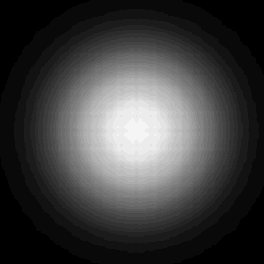
Figure 3: ガウシアン分布とフラットトップ分布間で変換されるビーム強度分布のアニメーション
フラットトップビームの実現方法
低コストで低性能なシステムでは、ガウシアンビームをアパーチャーを用いて物理的に遮り、擬似的なフラットトップを作り出すものがあります。これは、ガウスウィングのエネルギーを無駄にしますが、コスト重視の場合には効果的です。より高い性能と費用のかかるレーザーエネルギーの効率的な使用を求めるアプリケーションでは、ガウシアンビーム分布をフラットトップビーム分布に変換するのに、ビーム整形用オプティクスが用いられます。屈折型のビームシェイパーは、強度分布の均一化と位相面の平坦化を可能にします。屈折型のAdlOptica πShaper フラットトップビームシェイパーは、コリメートされたフラットトップビームを作り出し、内部で一点集光することなく100%近い効率で、高出力の入射ビームを可能にします (Figure 4とFigure 5)。その光学設計は、ホログラフィ、顕微鏡、および特に距離の長いシステム実装に適しています。

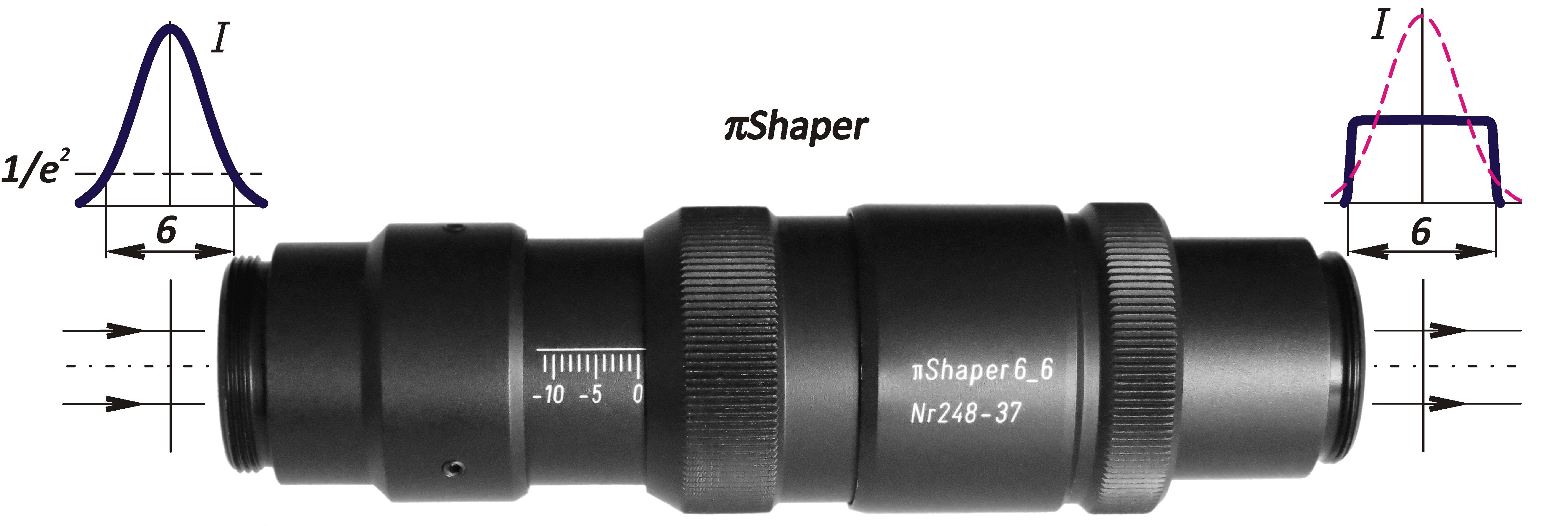
Figure 4: 屈折型のAdlOptica πShaper フラットトップビームシェイパーを用いた入射ガウシアンビームのフラットトップ分布化3
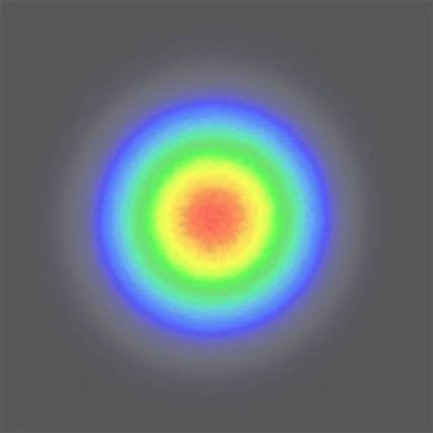
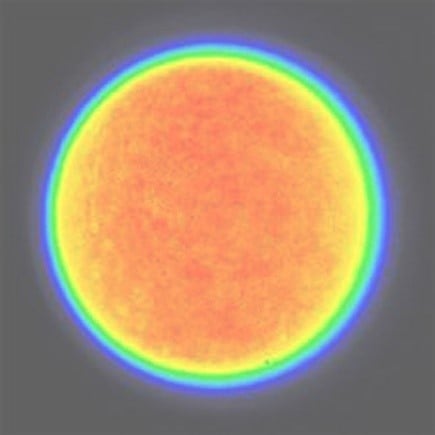
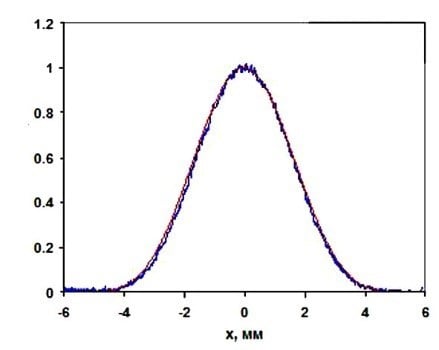
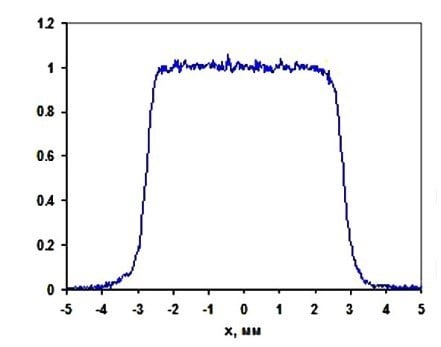
Figure 5: 入射ガウシアンビームの強度分布 (左) とAdlOptica πShaper フラットトップビームシェイパーからの出射フラットトップビームの強度分布 (右) の実験比較3
屈折型のAdlOptica Focal-πShaper Q フラットトップビームシェイパーは、入射ガウシアンビームをコリメートされたエアリーディスク分布に変換する別のタイプのビームシェイパーです。回折限界レンズで集光後、フラットトップの集光スポットを形成します (Figure 6)。コンパクトな設計と製品に施されたねじ込みデザインにより、さまざまなシステム内への実装を容易にします。100%近い効率もあり、リソグラフィ、マイクロマシニング、およびマイクロ溶接など、一点集光スポットでフラットトップ分布が求められるアプリケーションに適します。4,5
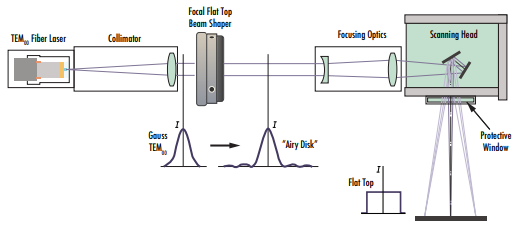
Figure 6: AdlOptica Focal-πShaper Q フラットトップビームシェイパーは、入射ガウシアンビーム分布をエアリーディスク分布に変換して、集光用光学部品通過後にフラットトップビーム分布になるようにします
屈折型のビームシェイパーに加え、エドモンド・オプティクスでは反射型、ホログラフィック型、および回折型をはじめとするその他のタイプも取り扱っています。詳細は、ビームシェイパーのページをご覧いただくか、当社のアプリケーションエンジニアチームまでお問い合わせください。
参考文献:
- International Organization for Standardization. (2018). Optics and photonics -- Lasers and laser-related equipment -- Test methods for laser beam power (energy) density distribution (ISO 13694-3:2018).
- Eryilmaz, Marion, et al. “Localization Microscopy Analyses of MRE11 Clusters in 3D-Conserved Cell Nuclei of Different Cell Lines.” Cancers, vol. 10, no. 1, 22 Jan. 2018, doi:10.3390/cancers10010025.
- Laskin, Alexander, et al. “Laser Beam Shaping for Biomedical Microscopy Techniques.” Biophotonics: Photonic Solutions for Better Health Care V, 27 Apr. 2016, doi:10.1117/12.2217927.
- Hung, Yung-Jr, et al. “Employing Refractive Beam Shaping in a Lloyds Interference Lithography System for Uniform Periodic Nanostructure Formation.” Journal of Vacuum Science & Technology B, Nanotechnology and Microelectronics: Materials, Processing, Measurement, and Phenomena, vol. 35, no. 3, 11 Apr. 2017, doi:10.1116/1.4980134.
- Laskin, Alexander, et al. “Refractive Beam Shapers for Focused Laser Beams.” Laser Beam Shaping XVII, 27 Sept. 2016, doi:10.1117/12.2235712.

























もしくは 現地オフィス一覧をご覧ください
クイック見積りツール
商品コードを入力して開始しましょう
Copyright 2023, エドモンド・オプティクス・ジャパン株式会社
[東京オフィス] 〒113-0021 東京都文京区本駒込2-29-24 パシフィックスクエア千石 4F
[秋田工場] 〒012-0801 秋田県湯沢市岩崎字壇ノ上3番地
The FUTURE Depends On Optics®